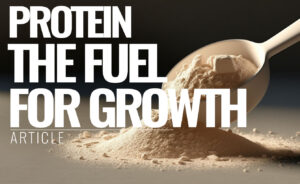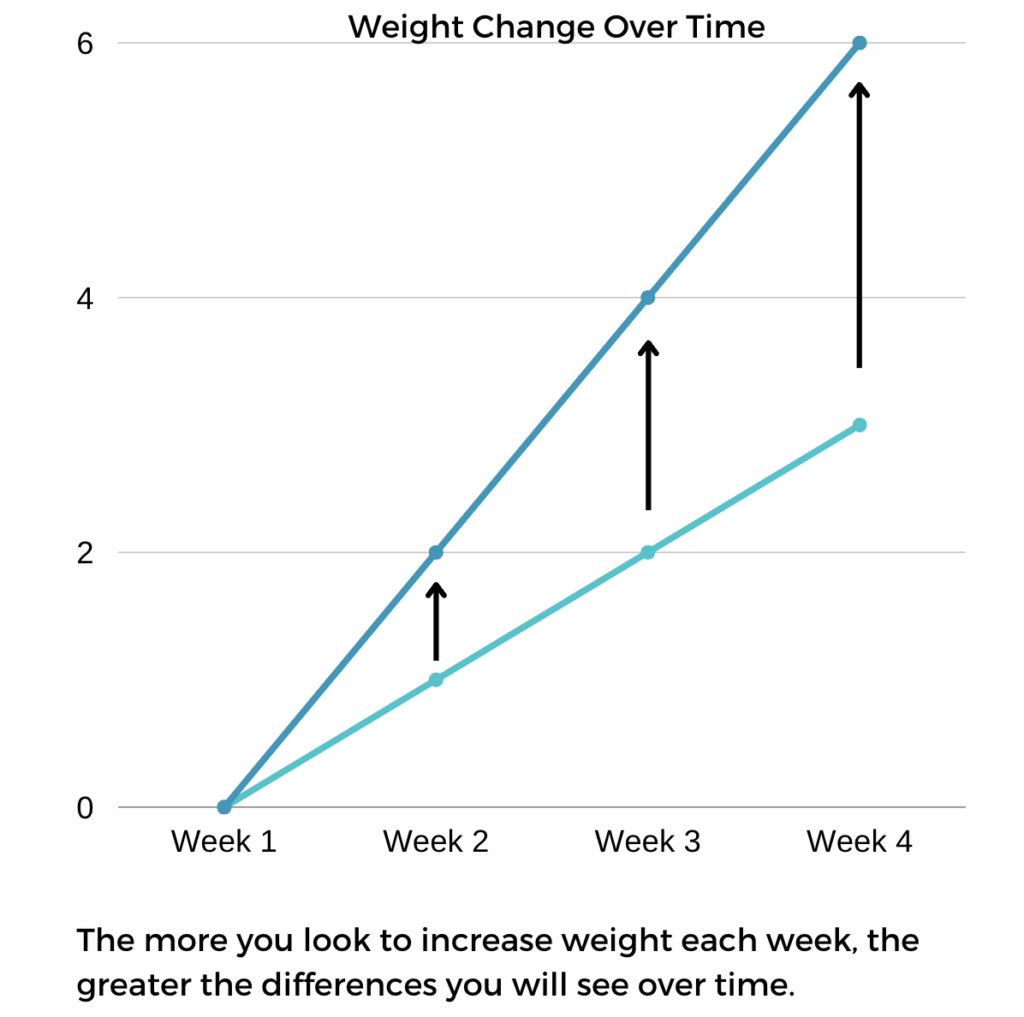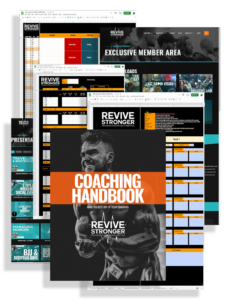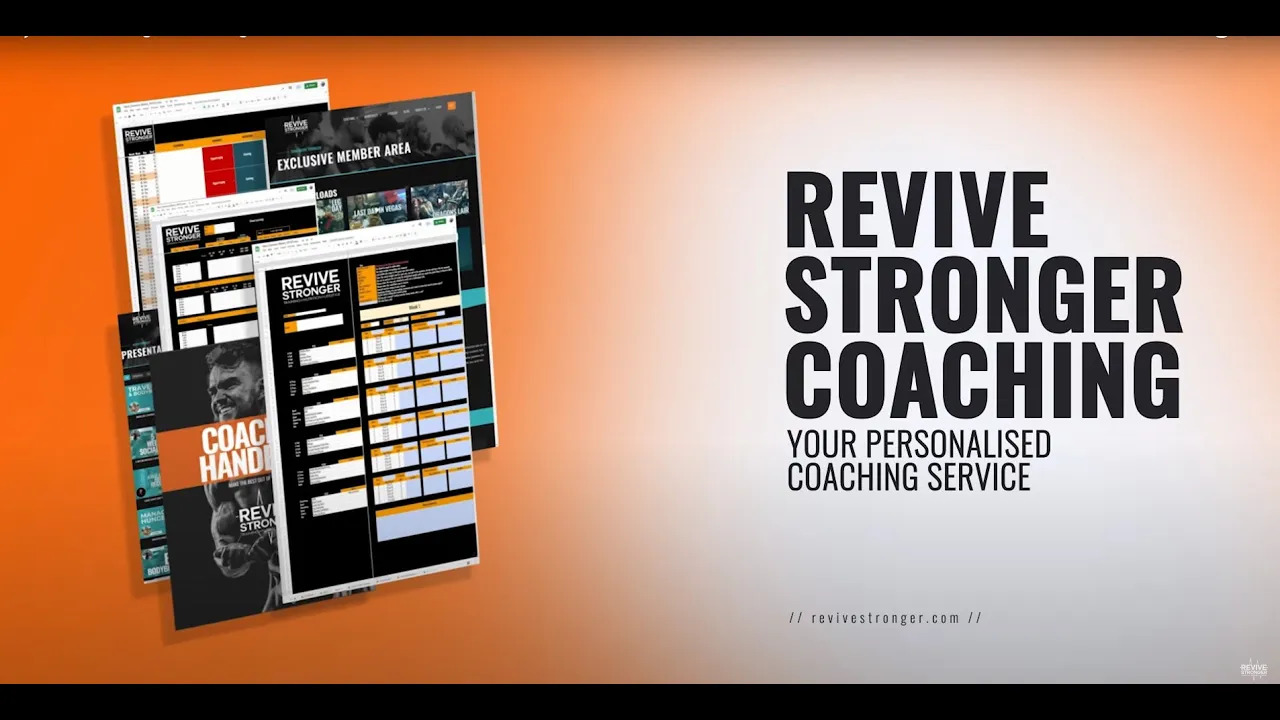
Revive Stronger
Massing, What You Should Expect

You have finally decided that a massing phase is right for you. The scene is right, the pieces are in place, and you have finely tuned and crafted a version of yourself ready for some growth. It is just you and some sculpting clay ready to be added to the sculpture you have already created. If a sculptor were to add too much clay to a piece already made, they may find challenges in managing proportions and spend needless amounts of time chiselling away the extra clay. Much like the sculptor adding clay, when massing it is foolish to aim to add as much weight in as little time as possible. Adding mass for the sake of mass won’t necessarily leave you with the desired outcomes. Muscle growth and fat gain are both somewhat rate-limited, however, body fat is much less rate limited than muscle growth.
Table of Contents
Where to start?
We have previously discussed that massing phases are generally accompanied by some fat gain. How much should you expect and how much you should aim to gain to maximize muscle gain while minimizing fat gain? That certainly is the golden question which unfortunately doesn’t have a definitive answer. There is a large degree of individual variability that will influence these factors, but this article will aim to parse through some of the nuances and give recommendations moving forward.
As a reminder, the rate at which you gain mass is entirely influenced by energy balance. Decoding everything that goes into energy balance makes the calculus difficult, and we will cover this in due time, but the absolute change in tissue is ultimately regulated through this balance. For now, we will view energy balance as a black-and-white relationship. The rate of body mass change is thus determined by the level of energy balance present. The more positive the energy balance (surplus), the greater the mass increase. The lower the energy balance, the smaller the mass increase.

So how much clay do we need to add? To establish how much you should be eating to gain some size, we need to make sure that you have already established the general amount of intake you need simply to maintain your weight. Think of this as just general maintenance or the sculpture. How much do you need to do to make sure you hold onto all the work that was done? There are a variety of intake calculators and formulas that can help estimate this value and these are great places to start. The best way to tell, if you have not established this value already, is to use one of these calculators as a baseline to start. Once you have a value, track your intake every day and aim to meet the amounts estimated for you. Track your weight over a 2 to 3-week time frame, which gives you plenty of time to work through highs and lows in your weight and see how much your average weight changed. If there was no change in your average weight, you are likely spot on your maintenance. If you gained weight, you are likely above maintenance, and if you lost weight, you are probably under your maintenance intake. Once maintenance is truly obtained, we have a great framework to work with.
The entire process can lend itself to be incredibly nuanced moving forward. For instance, how much do your genetics influence your ability to put on muscle vs body fat? How long have you trained? What is your current body fat percentage? And these questions make things needlessly complicated for most people. The reality is, you probably don’t need to worry about this much, since there is only so much you can control. A sculpture can make a new sculpture, but you can’t make a new body. So, leaving a lot of that cloudiness behind us, between 0.25% and 0.5% of weight gain per week will generally find itself to be a sweet spot to make measurable improvements in muscle gain while keeping fat gain minimal. This is to say that if you were 200 lbs you would look to gain between .5 and 1 pound per week. Any lower, and it becomes incredibly difficult to assess how much, if any, weight change there is. Too much, and you may just be adding on more body fat that you may later look to lose through a fat-loss phase. To make matters worse with too few calories added, there are some individuals who when faced with a calorie surplus, increase their non-exercise activity enough to make the net change virtually non-existent.
This means you may find that as you increase your intake, you may tap your foot more, move your legs more, or subconsciously sit up more often leading to an energy expenditure increase. These are usually those people that seem to be able to eat whatever they please and not gain any weight. If you find yourself hating these people, you aren’t alone. They probably already hate themselves when trying to mass. Stuffing your face all day sounds cool but gets old quickly.
What do I do with this information?
If you have a firm sense of where your maintenance level intake is, you can increase intake by a few hundred calories. Common practice is to increase somewhere between 250 and 500 calories which is likely associated with the 3500 calories per pound notion. We will discuss this in more depth later, but the general practice is a great place to start. We can also discuss in more detail where these calories can come from but so long as protein is sufficient, those calories can realistically come from carbs or fats. Unless you are aiming to max out performance this ultimately comes down to personal preference.
Once you increase your intake to the desired level, track your weight, train hard, and measure how your average weight changes week to week. If you notice you are gaining far too much weight, lower the intake, and if you are gaining far too little, increase the intake a bit more. The high degree of nuance can make the small details rather complicated and the more you track changes the easier it is to assess how your body responds to the various changes you implement.
Tracking Progress
As you continue through your mass there are some measurements you can track outside of the one on the scale. Circumference measurements like the bicep, hips, waist, and if it fits the goals, your calves, can all be areas you measure to assess progress. For instance, say your scale is showing that there is little change in your weight, but your biceps have grown half an inch while your waist has stayed the same. Maybe things aren’t going so poorly. You should generally still aim for weight to increase but there is undoubtedly growth in this scenario.
In addition to measurements, progress in your lifts is a great indication that muscle growth is occurring. As your muscles grow, they can produce more force and so if lifts you’ve done routinely are increasing it is unlikely this is coming from you getting better at the movement alone. This is also a great way to work through some uncertainty. If you feel you look like you aren’t gaining any muscle in the mirror, but your lifts are all increasing, and measurements in desired muscle groups are increasing, then you’re certainly gaining some muscle. Generally speaking, it is easier to look jacked undressed than it is to look jacked with clothes on when you are super lean. Similarly, it is easier to look more jacked with clothes on than with clothes off when you are massing. The statue of Adonis shows this clearly because if he were wearing clothes, he’d probably look like he doesn’t even lift.
Summary
So, you know your maintenance, you have decided to increase calories by approximately 500 calories per day, you feel great, train hard, and you let changes on the scale, body measurements, and performances in the gym be your guide in navigating the success of your mass. If all things seem to be moving in an upward trajectory, you are almost surely packing on some more muscle to your physique. If you are not moving in the direction you want, minor adjustments might be needed. Since you have things tracked, you can easily assess how the changes you make alter your progress.
What Next?
Join our free facebook group or add us on instagram (revivestronger) and ask your question there, I will respond asap. Or if you’re after more and want to take your training and nutrition to the next level, go and sign up for our coaching service.
One more thing…
Do you have a friend who would love the above?
Share this article with them and let me know what they think.

Coaching
I hope you liked this article. If you want to learn more or if you’re still unsure about how to apply the methodologies or the way to go about it, sign up for our coaching and benefit from first-hand experience and take your progress and knowledge to the next level.

Author – Danny Wirt
Danny is a former University professor teaching courses in exercise and sport science to various levels of undergraduate students. He is currently pursuing a terminal degree in Health and
Human Performance with previous experience in sport supplement research in graduate school and clinical exercise research at the University of Pennsylvania. Outside of his academic-related entanglements, Danny competed competitively in powerlifting and has a strong interest in physique-related sports. If he isn’t training, reading, or writing, he’s spending time with his wife and dog eating, relaxing, or going on walks.
We are a personal coaching service that helps you achieve your goals. We want you to become the best version of yourself.





